Dacheng Yin
WeThink: Toward General-purpose Vision-Language Reasoning via Reinforcement Learning
Jun 09, 2025Abstract:Building on the success of text-based reasoning models like DeepSeek-R1, extending these capabilities to multimodal reasoning holds great promise. While recent works have attempted to adapt DeepSeek-R1-style reinforcement learning (RL) training paradigms to multimodal large language models (MLLM), focusing on domain-specific tasks like math and visual perception, a critical question remains: How can we achieve the general-purpose visual-language reasoning through RL? To address this challenge, we make three key efforts: (1) A novel Scalable Multimodal QA Synthesis pipeline that autonomously generates context-aware, reasoning-centric question-answer (QA) pairs directly from the given images. (2) The open-source WeThink dataset containing over 120K multimodal QA pairs with annotated reasoning paths, curated from 18 diverse dataset sources and covering various question domains. (3) A comprehensive exploration of RL on our dataset, incorporating a hybrid reward mechanism that combines rule-based verification with model-based assessment to optimize RL training efficiency across various task domains. Across 14 diverse MLLM benchmarks, we demonstrate that our WeThink dataset significantly enhances performance, from mathematical reasoning to diverse general multimodal tasks. Moreover, we show that our automated data pipeline can continuously increase data diversity to further improve model performance.
R1-Onevision: Advancing Generalized Multimodal Reasoning through Cross-Modal Formalization
Mar 13, 2025Abstract:Large Language Models have demonstrated remarkable reasoning capability in complex textual tasks. However, multimodal reasoning, which requires integrating visual and textual information, remains a significant challenge. Existing visual-language models often struggle to effectively analyze and reason visual content, resulting in suboptimal performance on complex reasoning tasks. Moreover, the absence of comprehensive benchmarks hinders the accurate assessment of multimodal reasoning capabilities. In this paper, we introduce R1-Onevision, a multimodal reasoning model designed to bridge the gap between visual perception and deep reasoning. To achieve this, we propose a cross-modal reasoning pipeline that transforms images into formal textural representations, enabling precise language-based reasoning. Leveraging this pipeline, we construct the R1-Onevision dataset which provides detailed, step-by-step multimodal reasoning annotations across diverse domains. We further develop the R1-Onevision model through supervised fine-tuning and reinforcement learning to cultivate advanced reasoning and robust generalization abilities. To comprehensively evaluate multimodal reasoning performance across different grades, we introduce R1-Onevision-Bench, a benchmark aligned with human educational stages, covering exams from junior high school to university and beyond. Experimental results show that R1-Onevision achieves state-of-the-art performance, outperforming models such as GPT-4o and Qwen2.5-VL on multiple challenging multimodal reasoning benchmarks.
MMAR: Towards Lossless Multi-Modal Auto-Regressive Probabilistic Modeling
Oct 15, 2024Abstract:Recent advancements in multi-modal large language models have propelled the development of joint probabilistic models capable of both image understanding and generation. However, we have identified that recent methods inevitably suffer from loss of image information during understanding task, due to either image discretization or diffusion denoising steps. To address this issue, we propose a novel Multi-Modal Auto-Regressive (MMAR) probabilistic modeling framework. Unlike discretization line of method, MMAR takes in continuous-valued image tokens to avoid information loss. Differing from diffusion-based approaches, we disentangle the diffusion process from auto-regressive backbone model by employing a light-weight diffusion head on top each auto-regressed image patch embedding. In this way, when the model transits from image generation to understanding through text generation, the backbone model's hidden representation of the image is not limited to the last denoising step. To successfully train our method, we also propose a theoretically proven technique that addresses the numerical stability issue and a training strategy that balances the generation and understanding task goals. Through extensive evaluations on 18 image understanding benchmarks, MMAR demonstrates much more superior performance than other joint multi-modal models, matching the method that employs pretrained CLIP vision encoder, meanwhile being able to generate high quality images at the same time. We also showed that our method is scalable with larger data and model size.
MicroCinema: A Divide-and-Conquer Approach for Text-to-Video Generation
Nov 30, 2023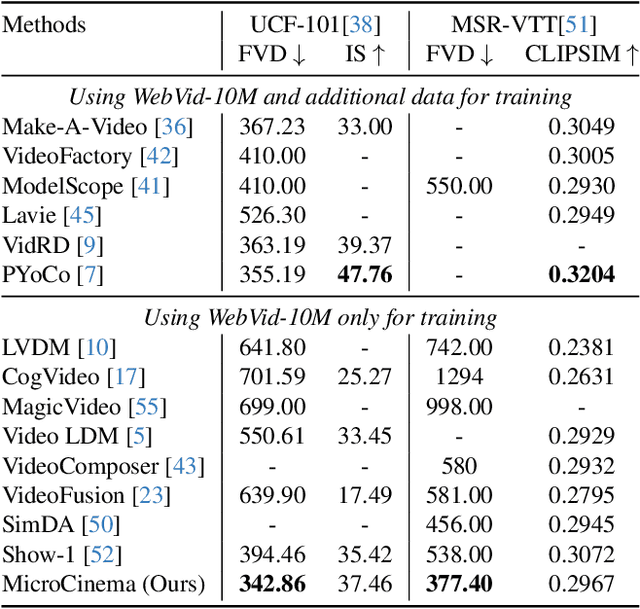
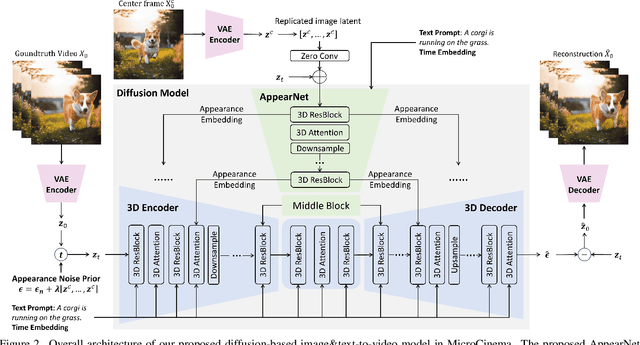
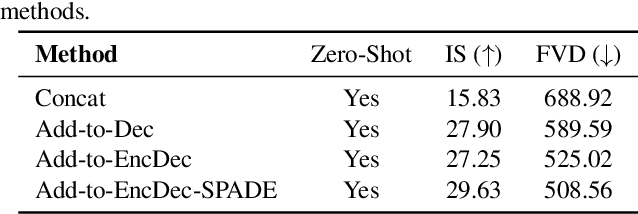
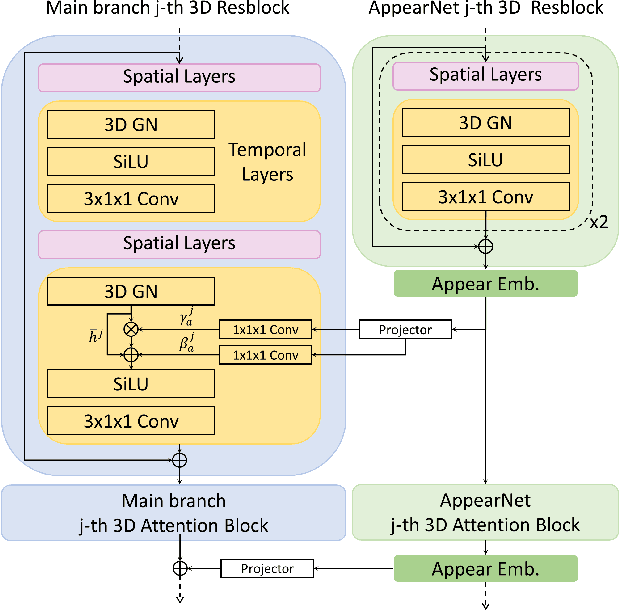
Abstract:We present MicroCinema, a straightforward yet effective framework for high-quality and coherent text-to-video generation. Unlike existing approaches that align text prompts with video directly, MicroCinema introduces a Divide-and-Conquer strategy which divides the text-to-video into a two-stage process: text-to-image generation and image\&text-to-video generation. This strategy offers two significant advantages. a) It allows us to take full advantage of the recent advances in text-to-image models, such as Stable Diffusion, Midjourney, and DALLE, to generate photorealistic and highly detailed images. b) Leveraging the generated image, the model can allocate less focus to fine-grained appearance details, prioritizing the efficient learning of motion dynamics. To implement this strategy effectively, we introduce two core designs. First, we propose the Appearance Injection Network, enhancing the preservation of the appearance of the given image. Second, we introduce the Appearance Noise Prior, a novel mechanism aimed at maintaining the capabilities of pre-trained 2D diffusion models. These design elements empower MicroCinema to generate high-quality videos with precise motion, guided by the provided text prompts. Extensive experiments demonstrate the superiority of the proposed framework. Concretely, MicroCinema achieves SOTA zero-shot FVD of 342.86 on UCF-101 and 377.40 on MSR-VTT. See https://wangyanhui666.github.io/MicroCinema.github.io/ for video samples.
ART$\boldsymbol{\cdot}$V: Auto-Regressive Text-to-Video Generation with Diffusion Models
Nov 30, 2023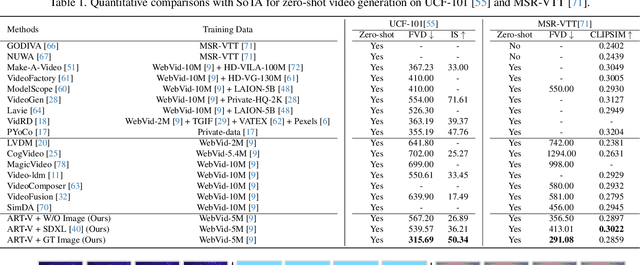
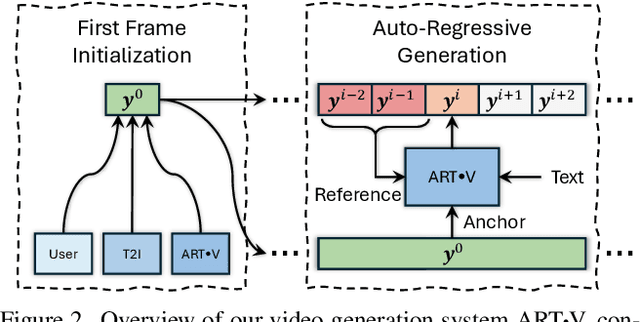
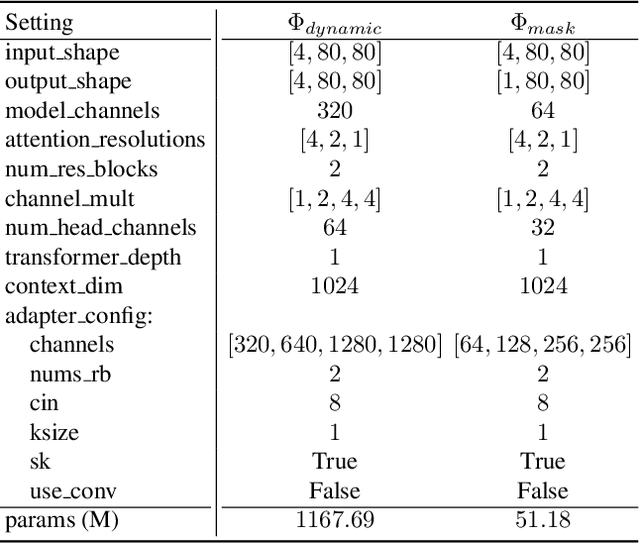
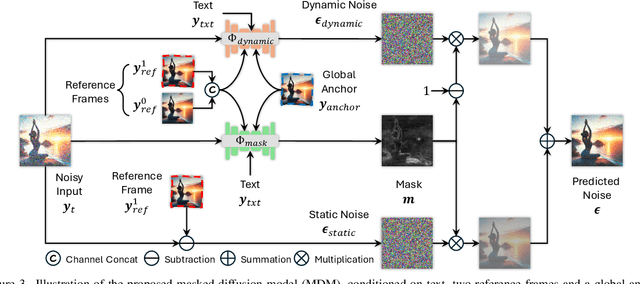
Abstract:We present ART$\boldsymbol{\cdot}$V, an efficient framework for auto-regressive video generation with diffusion models. Unlike existing methods that generate entire videos in one-shot, ART$\boldsymbol{\cdot}$V generates a single frame at a time, conditioned on the previous ones. The framework offers three distinct advantages. First, it only learns simple continual motions between adjacent frames, therefore avoiding modeling complex long-range motions that require huge training data. Second, it preserves the high-fidelity generation ability of the pre-trained image diffusion models by making only minimal network modifications. Third, it can generate arbitrarily long videos conditioned on a variety of prompts such as text, image or their combinations, making it highly versatile and flexible. To combat the common drifting issue in AR models, we propose masked diffusion model which implicitly learns which information can be drawn from reference images rather than network predictions, in order to reduce the risk of generating inconsistent appearances that cause drifting. Moreover, we further enhance generation coherence by conditioning it on the initial frame, which typically contains minimal noise. This is particularly useful for long video generation. When trained for only two weeks on four GPUs, ART$\boldsymbol{\cdot}$V already can generate videos with natural motions, rich details and a high level of aesthetic quality. Besides, it enables various appealing applications, e.g., composing a long video from multiple text prompts.
Learning Trajectories are Generalization Indicators
May 04, 2023



Abstract:The aim of this paper is to investigate the connection between learning trajectories of the Deep Neural Networks (DNNs) and their corresponding generalization capabilities when being optimized with broadly used gradient descent and stochastic gradient descent algorithms. In this paper, we construct Linear Approximation Function to model the trajectory information and we propose a new generalization bound with richer trajectory information based on it. Our proposed generalization bound relies on the complexity of learning trajectory and the ratio between the bias and diversity of training set. Experimental results indicate that the proposed method effectively captures the generalization trend across various training steps, learning rates, and label noise levels.
Filler Word Detection with Hard Category Mining and Inter-Category Focal Loss
Apr 12, 2023



Abstract:Filler words like ``um" or ``uh" are common in spontaneous speech. It is desirable to automatically detect and remove them in recordings, as they affect the fluency, confidence, and professionalism of speech. Previous studies and our preliminary experiments reveal that the biggest challenge in filler word detection is that fillers can be easily confused with other hard categories like ``a" or ``I". In this paper, we propose a novel filler word detection method that effectively addresses this challenge by adding auxiliary categories dynamically and applying an additional inter-category focal loss. The auxiliary categories force the model to explicitly model the confusing words by mining hard categories. In addition, inter-category focal loss adaptively adjusts the penalty weight between ``filler" and ``non-filler" categories to deal with other confusing words left in the ``non-filler" category. Our system achieves the best results, with a huge improvement compared to other methods on the PodcastFillers dataset.
TridentSE: Guiding Speech Enhancement with 32 Global Tokens
Oct 24, 2022Abstract:In this paper, we present TridentSE, a novel architecture for speech enhancement, which is capable of efficiently capturing both global information and local details. TridentSE maintains T-F bin level representation to capture details, and uses a small number of global tokens to process the global information. Information is propagated between the local and the global representations through cross attention modules. To capture both inter- and intra-frame information, the global tokens are divided into two groups to process along the time and the frequency axis respectively. A metric discriminator is further employed to guide our model to achieve higher perceptual quality. Even with significantly lower computational cost, TridentSE outperforms a variety of previous speech enhancement methods, achieving a PESQ of 3.47 on VoiceBank+DEMAND dataset and a PESQ of 3.44 on DNS no-reverb test set. Visualization shows that the global tokens learn diverse and interpretable global patterns.
RetrieverTTS: Modeling Decomposed Factors for Text-Based Speech Insertion
Jun 28, 2022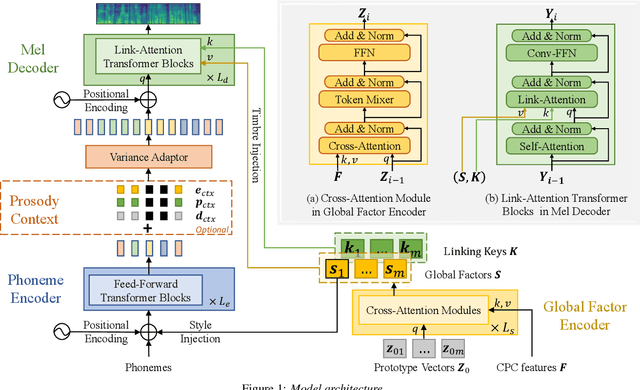
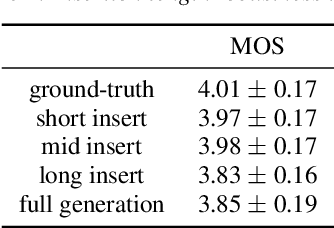
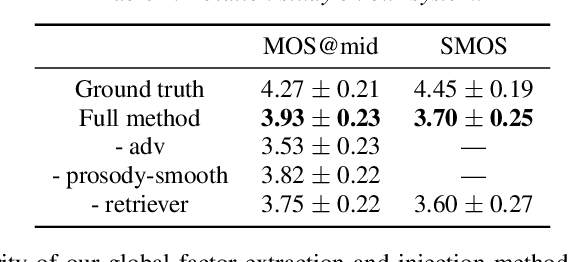
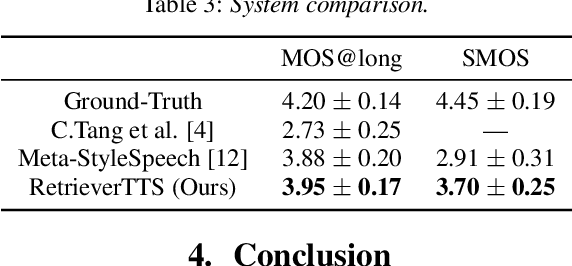
Abstract:This paper proposes a new "decompose-and-edit" paradigm for the text-based speech insertion task that facilitates arbitrary-length speech insertion and even full sentence generation. In the proposed paradigm, global and local factors in speech are explicitly decomposed and separately manipulated to achieve high speaker similarity and continuous prosody. Specifically, we proposed to represent the global factors by multiple tokens, which are extracted by cross-attention operation and then injected back by link-attention operation. Due to the rich representation of global factors, we manage to achieve high speaker similarity in a zero-shot manner. In addition, we introduce a prosody smoothing task to make the local prosody factor context-aware and therefore achieve satisfactory prosody continuity. We further achieve high voice quality with an adversarial training stage. In the subjective test, our method achieves state-of-the-art performance in both naturalness and similarity. Audio samples can be found at https://ydcustc.github.io/retrieverTTS-demo/.
Retriever: Learning Content-Style Representation as a Token-Level Bipartite Graph
Feb 24, 2022



Abstract:This paper addresses the unsupervised learning of content-style decomposed representation. We first give a definition of style and then model the content-style representation as a token-level bipartite graph. An unsupervised framework, named Retriever, is proposed to learn such representations. First, a cross-attention module is employed to retrieve permutation invariant (P.I.) information, defined as style, from the input data. Second, a vector quantization (VQ) module is used, together with man-induced constraints, to produce interpretable content tokens. Last, an innovative link attention module serves as the decoder to reconstruct data from the decomposed content and style, with the help of the linking keys. Being modal-agnostic, the proposed Retriever is evaluated in both speech and image domains. The state-of-the-art zero-shot voice conversion performance confirms the disentangling ability of our framework. Top performance is also achieved in the part discovery task for images, verifying the interpretability of our representation. In addition, the vivid part-based style transfer quality demonstrates the potential of Retriever to support various fascinating generative tasks. Project page at https://ydcustc.github.io/retriever-demo/.
 Add to Chrome
Add to Chrome Add to Firefox
Add to Firefox Add to Edge
Add to Edge